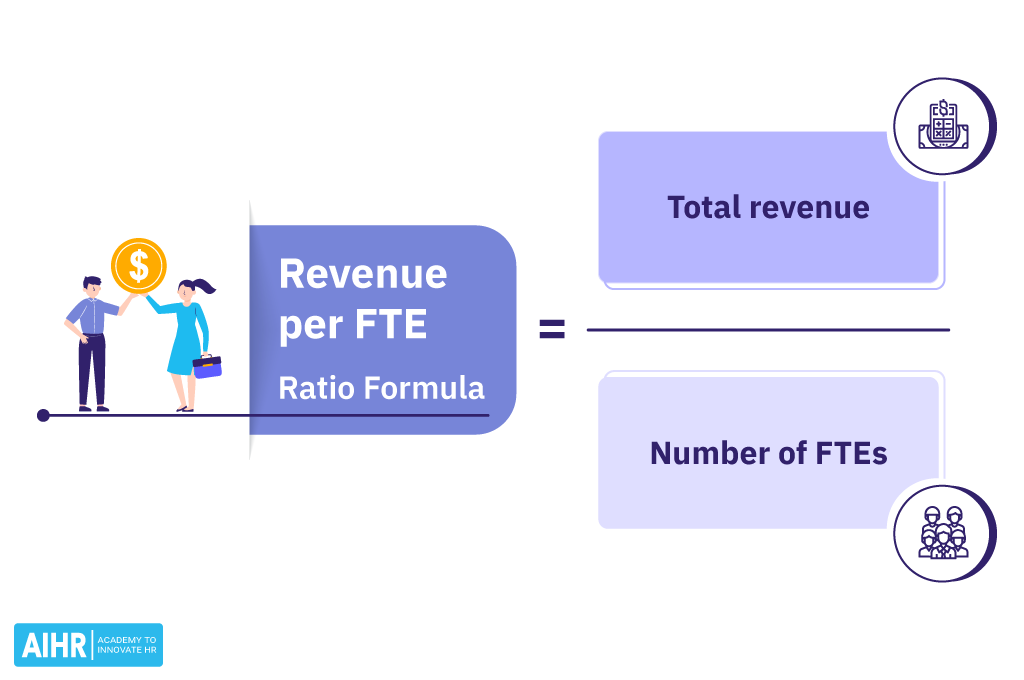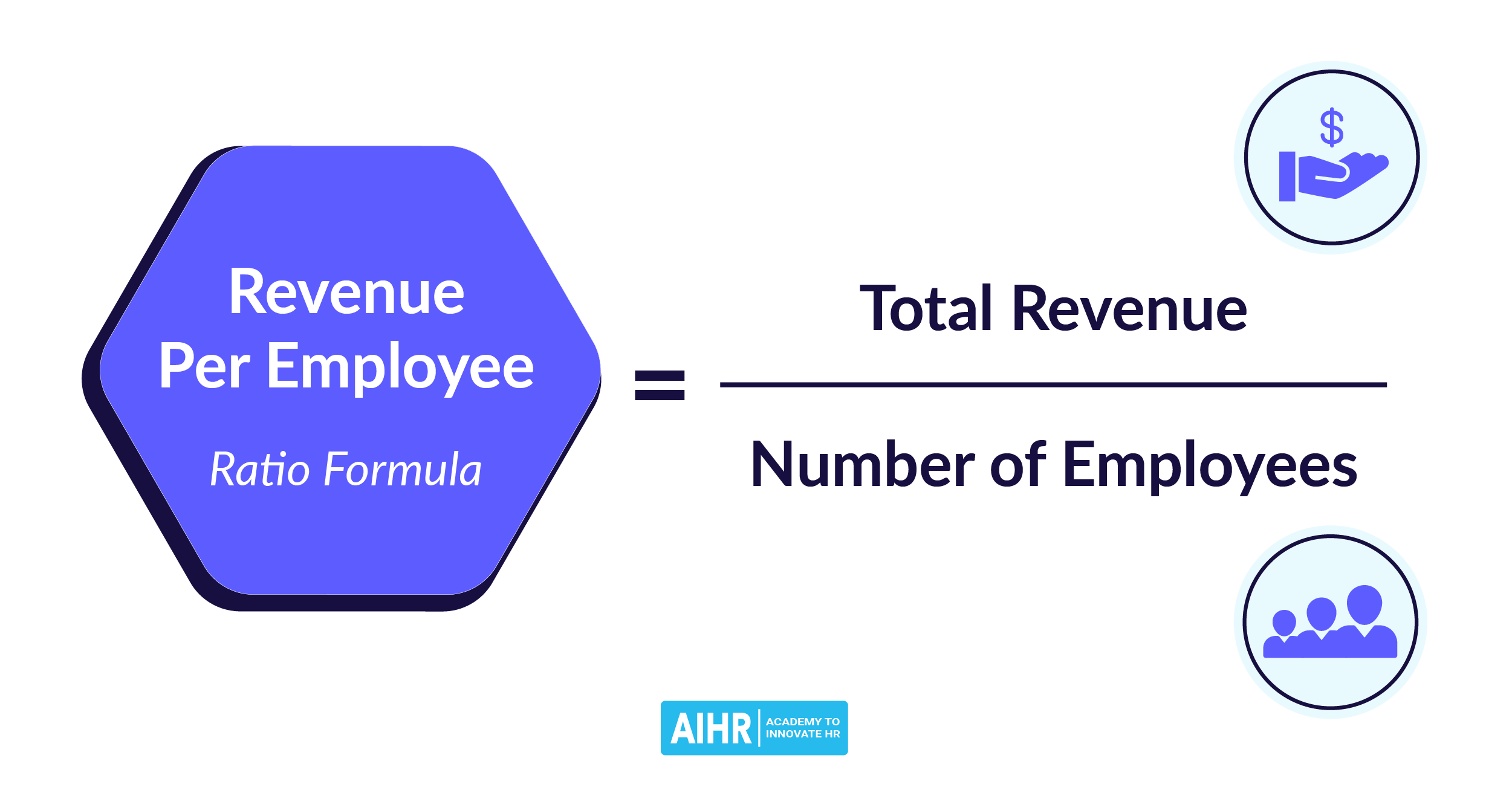Revenue per FTE
What is revenue per FTE?
Revenue per Full-Time Equivalent (FTE) is an HR metric that measures the revenue a company generates in relation to its number of full-time equivalent employees. It provides insights into the efficiency and productivity of the workforce by indicating how well a company utilizes its human resources to generate income.
Revenue per FTE is similar to the revenue per employee metric. However, while revenue per FTE adjusts for part-time and contract workers by converting their hours into full-time equivalents, revenue per employee simply divides total revenue by the number of employees, regardless of their employment status or hours worked.
Factors affecting revenue per FTE
Several factors can significantly impact the revenue per FTE within a company, reflecting both internal efficiencies and external market conditions. Here are some of the key factors:
- Industry and market conditions: Different industries have varying average revenue per FTE figures due to the nature of their operations and market demand.
- Organizational structure: The way an organization is structured, including the distribution of roles, responsibilities, and reporting lines, can affect employee productivity and, consequently, revenue per FTE.
- Technology and automation: Investments in technology and automation can significantly enhance productivity, allowing a company to generate more revenue with the same or fewer employees.
- Employee productivity: Higher productivity levels can lead to increased revenue per FTE. This is often influenced by factors such as employee skills, motivation, and the effectiveness of training programs.
- Management practices: Effective management and strategic decisions impact revenue generation and operational efficiency. Good leadership can improve employee performance and optimize resource allocation.
How to calculate revenue per FTE
Here’s how you calculate revenue per FTE:
- Determine the total revenue: Determine the total revenue generated by the company over a specific period, such as monthly, quarterly, or annually.
- Calculate Full-Time Equivalents (FTEs): Calculate the number of full-time equivalents in the company. This includes both full-time employees and the equivalent of part-time employees converted into full-time terms. For instance, if two part-time employees work half the hours of a full-time employee together, they are considered one FTE.
- Calculate revenue per FTE: Divide the total revenue by the number of FTEs to find the revenue generated per FTE.
The formulas
Number of Full-Time Equivalents = (Total hours worked by part-time employees + Total hours worked by full-time employees) / Standard hours for full-time employees
Revenue per FTE = Total revenue / Number of FTEs
Revenue per FTE calculation example
Let’s say that a company has:
- Total revenue: $10 million
- Full-time employees: 30
- Part-time employees: 20, each working half the hours of full-time
Given a standard full-time schedule of 40 hours per week, the calculation would be as follows:
Calculate total FTE:
Full-time FTEs = 30
Part-time FTEs = (20 employees * 20 hours) / 40 = 10
Total FTE = 30 (full-time) + 10 (part-time) = 40 FTEs
Calculate revenue per FTE:
Revenue per FTE = $10,000,000 / 40= $250,000
On average, each FTE at this company generates $250,000 in revenue.
This metric can be useful for assessing the efficiency and productivity of the workforce in generating revenue.
Why is it important to measure revenue per FTE?
Revenue per FTE serves as a key performance indicator (KPI) that offers insights into various aspects of a business’s operational efficiency and profitability. Here are some of the main reasons why it’s crucial to measure revenue per FTE:
- Productivity analysis: Revenue per FTE helps assess the workforce’s productivity. It indicates how effectively a company utilizes its human resources to generate revenue.
- Operational efficiency: This metric provides insights into the operational efficiency of a business. It can help identify areas where the company might be overstaffed or understaffed, allowing for better workforce planning and optimization of labor costs.
- Benchmarking: Comparing the revenue per FTE with industry standards or competitors provides valuable insights into how well a company performs relative to its peers.
- Strategic decision-making: Insights gained from analyzing revenue per FTE can inform strategic decisions related to hiring, investments in technology, training, and development programs for employees.
How to increase revenue per FTE: Tips for HR
Here are some practical tips for HR to help increase revenue per FTE:
- Provide employees with the latest technology and tools that can enhance their work efficiency and effectiveness.
- Invest time and resources in attracting and selecting the right candidates. High-quality hires are more likely to perform well and contribute to increased revenue per FTE.
- Cultivate a learning-centric culture by providing access to online courses, workshops, and seminars covering industry-specific topics and general professional skills.
- Analyze and optimize work processes to eliminate inefficiencies and reduce time wastage, enabling employees to boost their productivity and contribute more efficiently to the company’s bottom line.
- Use data analytics to identify trends, measure employee performance, and understand your organization’s productivity drivers. This information can help make informed decisions on where to invest in training, technology, or process improvements.
FAQ
A good revenue per FTE varies significantly across industries and company sizes. Generally, a higher figure indicates better efficiency and productivity. Companies often benchmark their revenue per FTE against industry averages to gauge their performance.
Productivity per FTE measures the output or value employees create within a specific period. It assesses how effectively a company utilizes its workforce to achieve its operational goals, focusing on the quality and quantity of work produced rather than just revenue generation.








